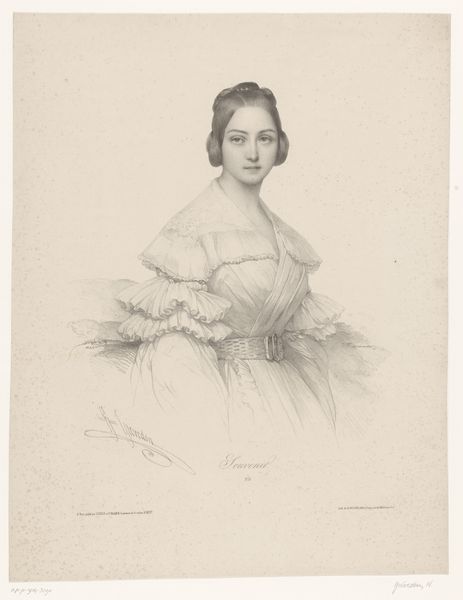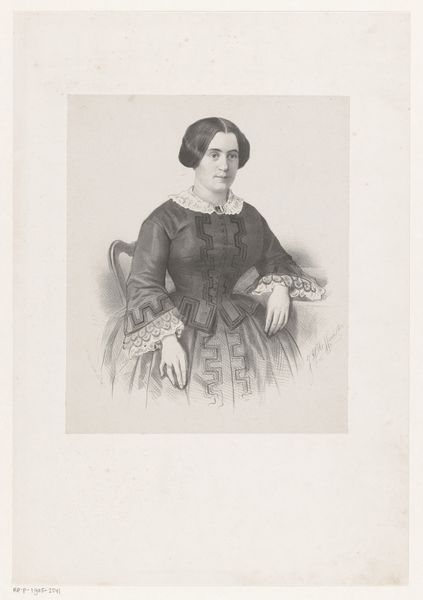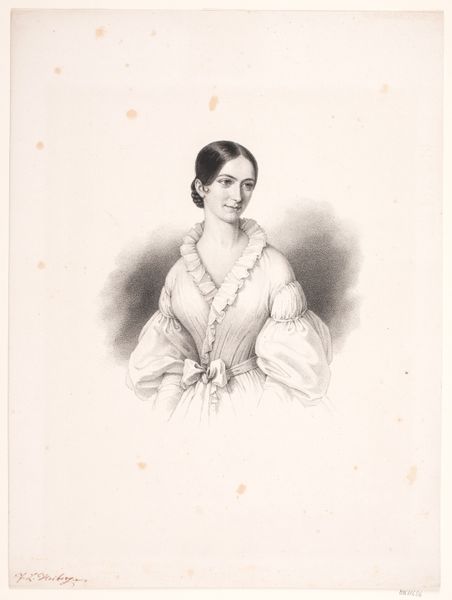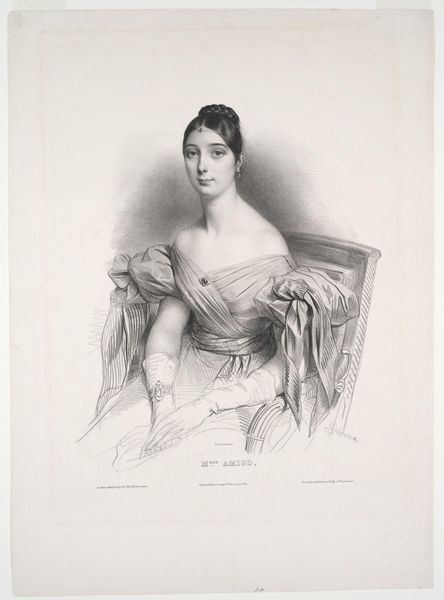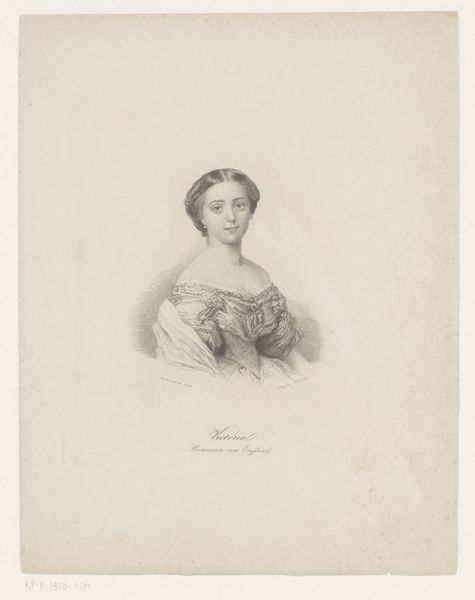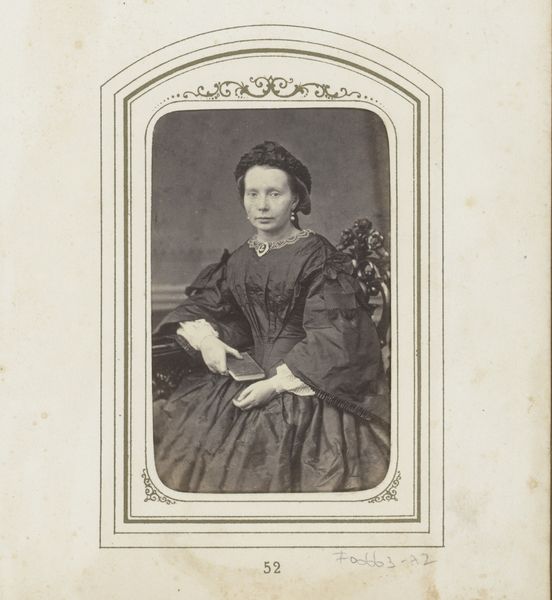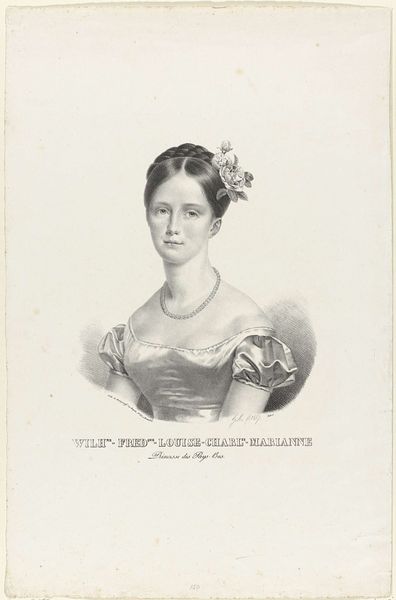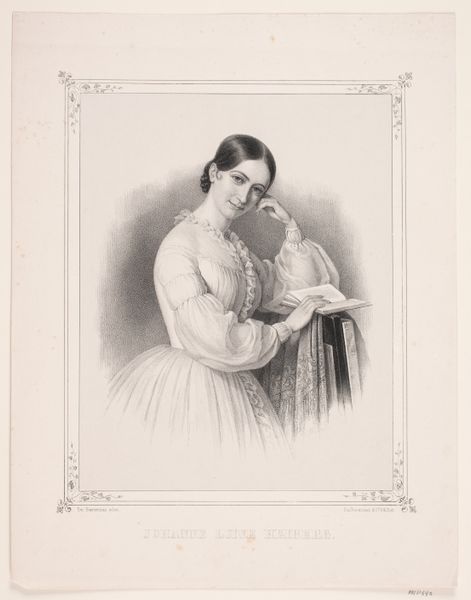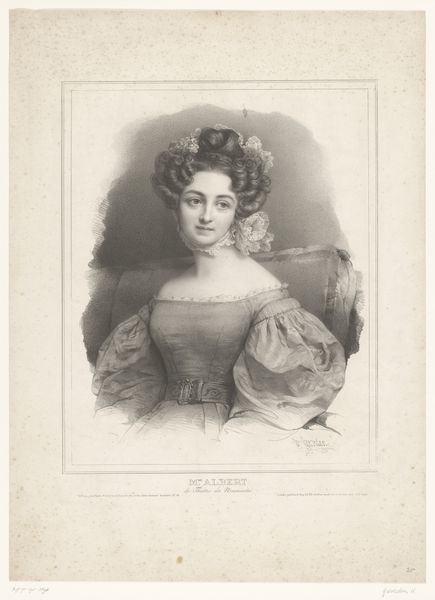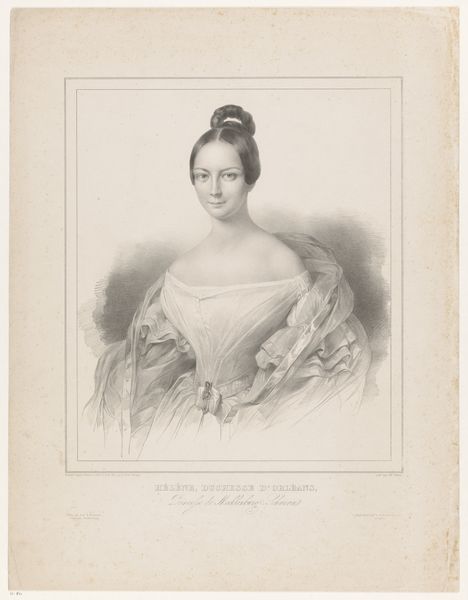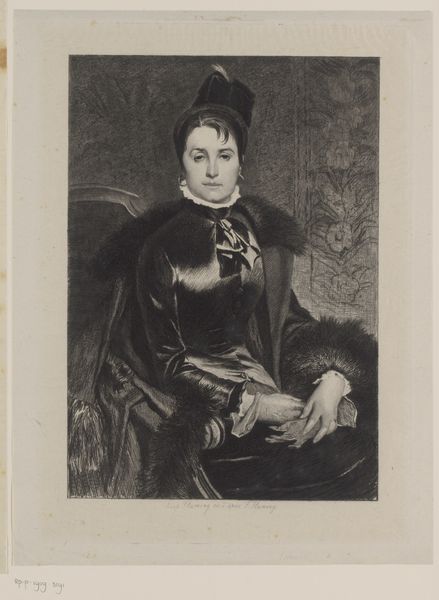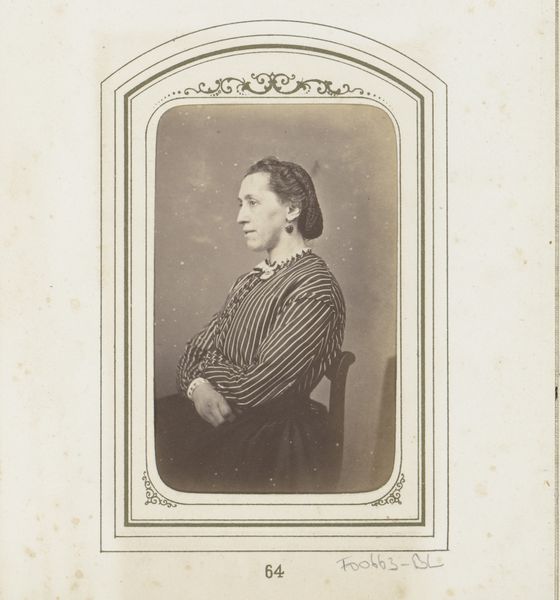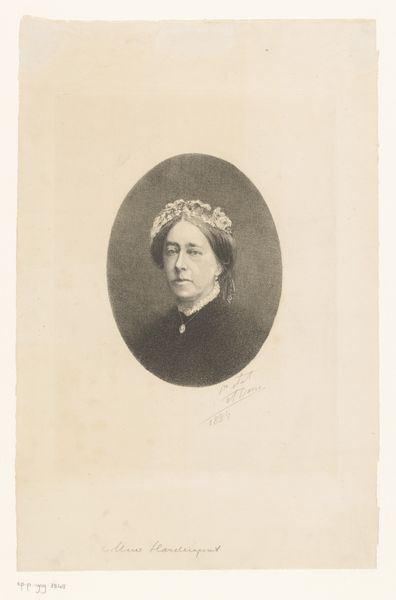
Dimensions: height 395 mm, width 286 mm
Copyright: Rijks Museum: Open Domain
Curator: At first glance, this piece feels incredibly delicate, almost ghostly. It is a grayscale rendering of a woman; what am I looking at here exactly? Editor: This is a print of Elisabeth Michajlovna, an engraving done sometime between 1844 and 1899 by M. Golde. It's a formal portrait, made with a fine hand, and displays influences from the Romantic and Academic art movements of the era. Curator: "Formal" is definitely the word. Her posture is so carefully posed, and there's a kind of somberness to it. Those large, dark eyes look both resigned and regal, a really curious pairing of emotion. It feels more than a simple portrait, does it? Editor: The imagery absolutely suggests status. Notice the elegant drape behind her and how she is seated almost like she's enthroned; and it's important to see her corseted gown not merely as clothing but as a symbol of constraint, literally molding her to the expected silhouette. This era valued portraits of individuals, often linked to ideas of historical significance. Curator: That's interesting; the corseted gown, then, isn't simply fashionable dress. Is there any further purpose beyond high society symbolism? How might history play a role in portraiture? Editor: Certainly. Academic art frequently referenced history or mythology, using allegory to elevate the subject. This connects a person to historical events or recognizable symbols that speak to her moral qualities and legacy. While her image doesn't show explicit symbolic props or allegories, the style connects to that academic goal to situate the elite classes in art, even beyond the mere aestheticization of class and status. Curator: It is indeed intriguing how art immortalized the upper classes. Thank you for helping to look beneath this ghostly engraving. I'm now really considering its power, and this almost melancholic connection between representation and preservation of authority. Editor: Absolutely, thinking about such prints within the framework of power structures provides invaluable perspectives into the meaning and making of art throughout time.
Comments
No comments
Be the first to comment and join the conversation on the ultimate creative platform.
